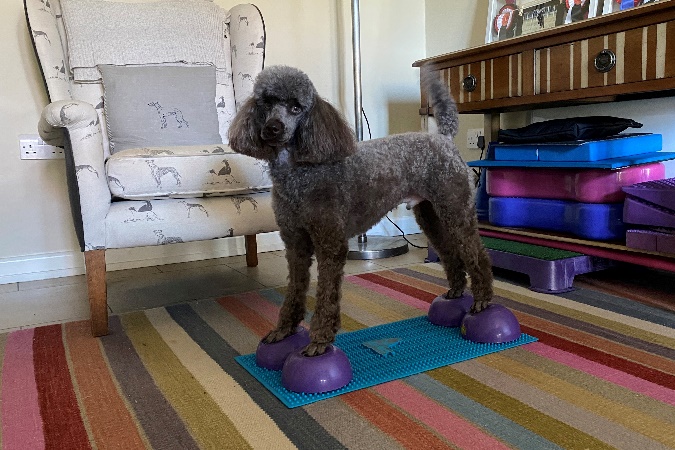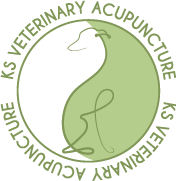
One part of the multi-modal management plan that I devise for my acupuncture clients is advice on how best to exercise their dog. This may be general advice on how much exercise and what type of exercise is most appropriate, or it may be advice on exercise therapy for their dog.
Exercise therapy is a plan of physical activities designed for a specific purpose. This may be to help prevent injuries in a sporting dog or a dog that may be at risk of developing a problem later in life. It may also help in recovery from an injury or after a surgical procedure. An exercise therapy plan can also help to reduce pain caused by a chronic disease such as osteoarthritis.
I sometimes provide basic exercises for my acupuncture patients if this is appropriate for them. However for advanced rehabilitation programmes, referral to a veterinary physiotherapist will be required.
There are four types of exercise therapy:
- Aerobic exercise
- Targeted strengthening exercises
- Balance and proprioception exercises
- Flexibility exercises
These four types of exercise therapy may be carried out on land or in water (hydrotherapy).
Studies have shown that a combination of these exercises can have a significant effect on pain and function, and can be as important as the use of drugs. They are not a substitute for using drugs if this is advised by your vet, but they may enable a reduction or withdrawal of drugs further down the line.
Aerobic exercise
This will essentially be undertaken during your daily walks, but bear in mind that your walks may need to modified depending on the condition being treated. For example, a dog with osteoarthritis will benefit from keeping walks short and frequent, walking on soft ground, and avoiding activities such as ball throwing.
Aerobic exercise may also be undertaken at a hydrotherapy centre, either in a pool or an underwater treadmill.

Targeted strengthening
This means strengthening particular muscles for a particular reason. For example, an agility dog needs strong muscles in the shoulder region to cope with jump landings, weaving poles, and sudden changes of direction.
A dog with osteoarthritis will benefit from strengthening the muscles around the affected joints.

Balance and proprioception
Balance is the ability to adjust the body to remain stable when static or moving. Proprioception is the awareness of the body’s position and movement in space. Balance and proprioception worsen with age and can also be affected by injury or surgery. Having good balance and body awareness are necessary for all dogs to function normally and will also help a dog to avoid injury. If something unexpected happens which puts your dog off its normal stride – for example, your dog slips or another dog knocks into them – having good balance and body awareness will enable the dog to pre-empt what is about to happen and adjust themselves accordingly.

Flexibility
The ability of joints to have full range of movement is a vital aspect of normal movement. Flexibility exercises will help to maintain range of movement.

A good exercise therapy plan will incorporate exercises which target all four of these types of exercise. Many of these exercises can be incorporated into your everyday life and don’t require any special equipment. Dogs also love doing these exercises! Even senior dogs or dogs with very limited mobility can do simple exercises which will help to keep them physically and mentally fit.
If you are interested in how exercise modification and/or exercise therapy could help your dog then please contact us!
